Other than a full gasket and seal kit and your engine condition is within the limit and conditions conducive of a run in machine, it is always advisable to change the cam timing chain, if this brakes untold damage can occur to the top and bottom end. Valves always need inspection as they can wear a bit thin where they make contact with there respective seats in the head when the valves show wear, leaving a sharp edge on the lip after cleaning they may need refacing and the cast iron seats will need recutting and grinding in using valve grinding paste. The valve stem to guide clearances must not be too loose as they wont seat properly. Valve springs really need replacing as they do not readily lose their strength inhabiting valve return.
When refitting the springs it is important to note that they seat onto shims, the small inner spring and the larger outer one have there own shims .if you neglect the shims the springs cause a lot of chafing because they oscillate they also produce a slight rotational movement witch the shims will take care of.
Valve guides are made of close grained cast iron and are very resilient but they will sometimes need changing. Great care has to be exercised not removing them but refitting new ones as they are very tricky to maintain squareness to there bores and the top faces can be easily bruised if they are beaten into a cold unpreheated head .
Let’s have a look at the bottom end and assess what we can find. Gearboxes on all Honda CBs are well over engineered, heavy gears and large diameter lay shafts, it seems that Honda anticipates misuse, IE missing gears but even under these conditions they are generally unbustable.
Selector forks will put with some wear on there selecting faces. The faces act on a gear by shuttling the gears back and forth and they are very hard, measuring around 58-60c Rockwell hardness, just a little harder than the gears that weigh in at around 56 Rockwell.
Seals will need changing, not because they may be worn but because if you get an oil leak through leaving them in, they are buggers to get at when the bottom end is closed up. The electrics, IE the generator on the end of the crank and the points on the other end of the crank and not immersed in oil or open to the elements as they are found on a load of British bikes they both have there well sealed inspection covers and very rarely give any trouble although the points will need occasional checking every so often.
All in all these CB 400s, CB 500s and 700 engines are a testament to Japanese engineering and will stand the test of time although restoration can be an expensive procedure, the mane part not being the labor but the replacement of worn parts.
Forgot to mention that if you mix up the crank shaft white metal shells or big end shells and have not put them back exactly where they came from. The engine will rotate and run for a short while until the whole engine starts to get roasting hot and comes to a stand still. mark them as you remove them from there semi circular housing, we have had several different makes of engine that have suffered this problem and it more or less doubling the cost of the restoration.

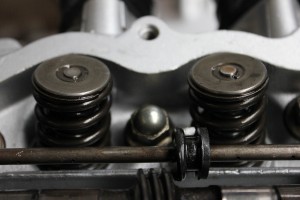
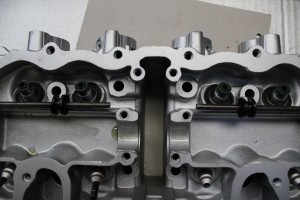
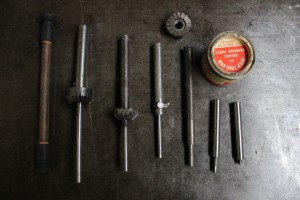
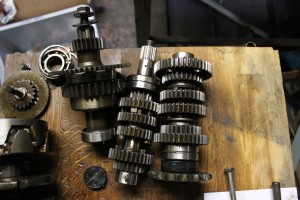
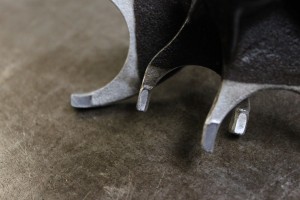
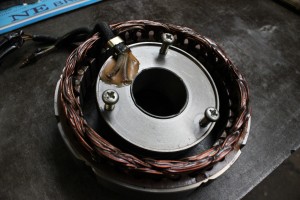
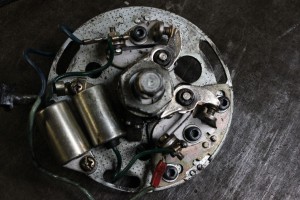

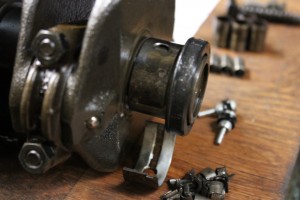

Pingback: acne cyst
Pingback: Stotfold Engineering Company Limited » Rebuilding A Honda CB400 engine part 2
Pingback: maillot de foot
Pingback: maillot equipe de france pas cher
Very interesting article keep them coming.
Pingback: maillot de foot
“Forgot to mention that if you mix up the crank shaft white metal shells or big end shells and have not put them back exactly where they came from. The engine will rotate and run for a short while until the whole engine starts to get roasting hot and comes to a stand still. mark them as you remove them from there semi circular housing, we have had several different makes of engine that have suffered this problem and it more or less doubling the cost of the restoration.”
Surely you would be replacing them during a rebuild !
No, It depends on how much they have worn. On this restoration the wear was little on the white metal shells, so they didn’t need replacing.
I don’t see you using an engine stand on any of the pictures. Is it really doable to do this entire rebuild without a stand on the table?
100% doable. with the correct matting theres really no need.
Can damaged cooling fins on the barrel be repaired by welding?
Yes, we are able to.